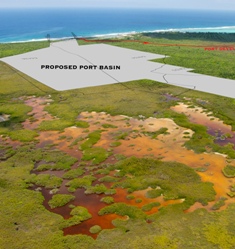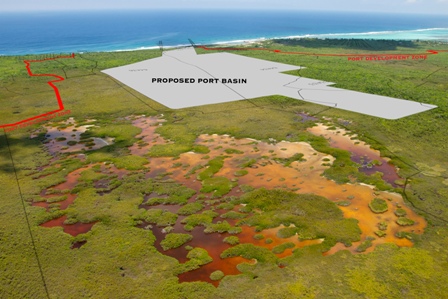Archive for June 20th, 2011

Christian faith requires accepting evolution
(Huffington Post): In the evangelical community, the year 2011 has brought a resurgence of debate over evolution. The current issue of Christianity Today asks if genetic discoveries preclude an historical Adam. While BioLogos, the brainchild of NIH director Francis Collins, is seeking to promote theistic evolution among evangelicals, the president of the Southern Baptist Theological Seminary recently argued that true Christians should believe the Earth is only a few thousand years old.
As someone raised evangelical, I realize anti-evolutionists believe they are defending the Christian tradition. But as a seminary graduate now training to be a medical scientist, I can say that, in reality, they've abandoned it.

UK fails to respond to gowth of corruption
 (CNS): Transparency International says that corruption in the UK is far greater than has been acknowledged. Although the organisation says corruption it is not endemic in Britain there is an inadequate response to its growing threat. The report which was released by the UK branch of NGO last week is described as the most comprehensive research ever undertaken in this area and examines levels of corruption in 23 UK sectors and institutions. “The research represents a ‘corruption health-check’ for the UK,” the NGO said in a release.
(CNS): Transparency International says that corruption in the UK is far greater than has been acknowledged. Although the organisation says corruption it is not endemic in Britain there is an inadequate response to its growing threat. The report which was released by the UK branch of NGO last week is described as the most comprehensive research ever undertaken in this area and examines levels of corruption in 23 UK sectors and institutions. “The research represents a ‘corruption health-check’ for the UK,” the NGO said in a release.
“Although corruption is not endemic in the UK, it is correct to say that in some areas of UK society and institutions, corruption is amuch greater problem than recognised and that there is an inadequate response to its growing threat,” TI said.
The report is made up of several studies including an overview, an opinion survey and an assessment of key sectors. It found that 53.4% of respondents believe that corruption has increased either a little or a lot in the UK in the last three years; only 2.5% of respondents believe that corruption has decreased and almost half said they didn’t think the government is tackling corruption. A whopping 92.7% of respondents would like to report corruption, but only 30.1% would know where to report it.
“There is complacency and a lack of knowledge of the extent of corruption in key sectors and institutions,” the report reads. “The policy response is incoherent and uncoordinated. This inadequate response has in certain areas created a culture of impunity.”
The report revealed that a particularly shocking finding was the reach of organised crime to sectors and institutions where criminal activity and corruption are inextricably linked. The UK Border Agency, the police and prison services as well as social housing have all been targeted by organised criminals.
“The employment of illegal workers is regarded by the construction industry as the single biggest corruption threat to the sector as it damages fair competition,” TI said. “There is a particular danger that hasty institutional changes and cuts in specific areas of government expenditure may, as an unintended consequence, create an environment that greatly increases the risk of corruption,” the report found.
TI stated that there are at least 12 different agencies or government departments with partial responsibility for anti-corruption activities, plus more than 40 police forces, and it is unclear whether they share information, collaborate on investigations, or share good practice on corruption prevention.
See reports here and below

Public spending goes up
 (CNS): Even though government expects to collect more revenue during the forthcoming financial year, spending on staff, services and subsidies continue to climb. According to the budget documents, which are now available for public scrutiny on the budget management unit website, the entire government spending for 2011/12, including personnel, operating expenses, debt servicing and the subsidies to statutory authorities, exceeds last year by over $10 million. This contradicts the three year plan that the government had agreed with the UK, which had sought around a 6% reduction in government expenses by this year.
(CNS): Even though government expects to collect more revenue during the forthcoming financial year, spending on staff, services and subsidies continue to climb. According to the budget documents, which are now available for public scrutiny on the budget management unit website, the entire government spending for 2011/12, including personnel, operating expenses, debt servicing and the subsidies to statutory authorities, exceeds last year by over $10 million. This contradicts the three year plan that the government had agreed with the UK, which had sought around a 6% reduction in government expenses by this year.
Although government has brought in its core government operating expenses a fraction under last year's figure, when the debt service costs which have increased are added as well as losses on currency transactions and the deficit from government companies and statutory authorities, the public purse is consuming nearly all of the revenue government expects to collect, leaving it with a $3.6 million surplus.
In the three year plan submitted to the UK, core government was predicted to spend $479 million but its costs are in fact in excess of $10 million more.
One of government’s highest bills is personnel costs for the civil service, which despite pressure from the UK continue to climb. This year government will spend over $228 million on staff compared to the $216 million it expects to have spent by the end of this last financial year 2010/11, which finishes on 30 June. In the three year plan government had committed to cutting the wage and benefits bill to $212 million
Government will also be spending a significant amount subsidizing government companies, in particular the Turtle Farm and Cayman Airways, which are receiving equity injections of $9.5 million and $5.1 million respectively, representing around 20% of the total government cash injections of over $55 milllion.
The Turtle Farm subsidy is only a fraction less than the $9.6 million pumped into the loss-making facility during the 2010/11 fiscal year. Cayman Airways will receive the same amount paid as this year to continue repayment of the shareholder deficiency. The airline will also receive $2.5 million to operate the Sister Islands service and $12.5 million to continue the airlift to strategic gateways to support the tourism product.
The education department will receive the biggest cash injection at $28.9 million to cover construction at the high schools, the primary schools, the development of the Sunrise Adult training centre and other capital works, which is fractionally less than the money that was allocated up until 30 June. The education department will also be receiving one of the biggest transfer payments to cover the cost of scholarships. The $7.5 million is a half million less than last year.
Government will also be spending $5.9 million on assisting 950 vulnerable people with poor relief, slightly less than the $6.7 million spent on 1,015 people this year. Government is hoping to cut the spending on poor relief vouchers from almost $2 million spent in 2010/11 to just over $1 million this year by reducing the number of people assisted from over 1,100 to less than 850.
The new fund created by the premier under his ministry for the 'promotion of nation building and church-based support' will also receive over $3 million. The exact nature of this spending has not been made clear but is described as support for schools, sporting, cultural or voluntary organizations and for church-based after-school programmes as well as a grant to the Pines retirement home. During the 2010/2011 year the budget documents reveal that $4,300,000 was spent under this allocation.
See all budget documents here – note all four documents for 2011/12 can be found on the list on the right had side at the bottom.
See three year plan below.

EE port faces more critics
 (CNS): Government’s own environment department, the country’s tourism business sector body and a local marine company have now all added their criticisms to the proposed development of a commercial sea port in East End. The DoE has pointed to numerous problems with the environmental impact assessment (EIA), which it says is incomplete and insufficient in at least nine areas; the marine company has singled out serious flaws in the design proposal as well as a number of “errors and omissions” in the EIA; and CITA says the proposal does not fit with the guidelines established in the National Tourism Management Policy 2009-2013. (Photos supplied by CITA)
(CNS): Government’s own environment department, the country’s tourism business sector body and a local marine company have now all added their criticisms to the proposed development of a commercial sea port in East End. The DoE has pointed to numerous problems with the environmental impact assessment (EIA), which it says is incomplete and insufficient in at least nine areas; the marine company has singled out serious flaws in the design proposal as well as a number of “errors and omissions” in the EIA; and CITA says the proposal does not fit with the guidelines established in the National Tourism Management Policy 2009-2013. (Photos supplied by CITA)
The criticisms come in the wake of the controversial proposal being delivered to government for its consideration. Many of those opposing it have described the project as a “mega quarry” and it has now attracted significant further criticisms that suggest numerous problems if the project were to go ahead but also seem to support the view that the proposal really is just a quarry in disguise. The very fact that there are so many flaws in the plans and designs increasingly suggests that the port is not the main focus of the project.
The Cayman Islands Tourism Association, after polling its members last week, said that not only is it not in line with the NTM policy, which is widely supported by the tourism industry, but the additional trucking fees for a cargo port in East End would significantly increase the cost of doing business. It also noted that the destruction of at least two popular dive sites and damage to at least another one undermine one of the main tourism attractions to this area of the Island. The impact on the water lens and the wide negative international media coverage related to the environmental issues caused by the project are also of concern, CITA said.
 Meanwhile, experts from WI Marine, a local marine engineering firm, have also raised the alarm about the designs, which it said were “seriously flawed, totally unrealistic and ill conceived.” The local marine experts said the design revealed a lack of knowledge and understanding of the maritime industry and warned that sufficient due diligence or research had not been carried out. The engineers further noted that, as the developer has stated he will not be funding the cost of the infrastructure for the port, developing that from the public purse would be very expensive.
Meanwhile, experts from WI Marine, a local marine engineering firm, have also raised the alarm about the designs, which it said were “seriously flawed, totally unrealistic and ill conceived.” The local marine experts said the design revealed a lack of knowledge and understanding of the maritime industry and warned that sufficient due diligence or research had not been carried out. The engineers further noted that, as the developer has stated he will not be funding the cost of the infrastructure for the port, developing that from the public purse would be very expensive.
WI Marine also points to the competition that the East End port would face if Imparato were to develop the transshipment element. “There are currently a number of well established competitors in the region, with Panama and Kingston Jamaica as the main competitions and the Port of Guadeloupe soon to be a competitor as they are close to commencing construction of a large transshipment HUB port in the eastern Caribbean,” the firm said.
“The East End Port would have to attract business away from these transshipment HUB ports in the region. Both competing ports are well positioned and offer low cost labour, large harbours, large anchorages and many other maritime related support services for these two transshipment HUB ports to exist.”
Among a long list of technical problems relating to the designs, the key among them, the experts say, is that the design of the port is too small.
“The port size is totally unrealistic and is too small to accommodate the operations and activities that the developer is proposing,” they stated. “The proposed turning basin with post Panamax size vessels clearly shows the turning basin will not safely accommodate these vessels.”
Having consulted with pilots of these types of ships, the engineers stated that there is insufficient space to stop large vessels in this proposed harbour design. The design flaws are also fuelling the position that the project is about excavating the fill and not developing a port.
The marine firm notes that the EIA was mostly irrelevant as it does not address exactly what the developer plans to do and plans not to do and pointed to a number of errors and omissions. WI Marine stated that the EIA does not analyze the feasibility and economics of the exportation of the fill which will be excavated from the harbour basin.
 It is the environmental impact assessment that has also raised concerns for the Department of Environment and the Environmental Advisory Board which was established in order to review the environmental issues surrounding the proposal.
It is the environmental impact assessment that has also raised concerns for the Department of Environment and the Environmental Advisory Board which was established in order to review the environmental issues surrounding the proposal.
In a letter to the developer the director Gina Ebanks-Petrie has listed a significant number of concerns about the assessment and noted that it does not comply with the original terms of reference agreed with the department. Ebanks-Petrie points out that the EIA does not follow internationally recognised methodology, making it “impossible for the reader to decipher the impact analysis.”
The report is described as “incomplete” and fails to identify which entities will be responsible for environmental monitoring mitigation and compliance. The director notes that no information has been provided on alternative designs and the ‘no action alternative’ does not adequately describe the position if the facilities were not constructed.
The DoE director pointed to the failure of the EIA to provide detailed excavation plans, how and where aggregate will be process or details of plans for turbidity control. She also notes a lack of description on the impact of socio-economic and cultural impacts on the local community.
Ebanks-Petrie describes the section on geology as “superficial” with no evidence that “detailed geological work has been undertaken.” She says it has ignored several important scientific papers and “reflects a poor understanding of the complex subsurface geology that exists on the eastern side of the island.” The EIA also ignores the noise impact, does not properly determine the significance of the impacts, wave energy modelling has not been done, turbidity assessment is inadequate and the groundwater study is described as preliminary as insufficient data has been used.
The DoE boss further notes that in the “absence of a transparent and objective assessment of the significance of the impacts,” it is not possible to assess whether the mitigations are either adequate or appropriate.
Asking the EIA team to go back and address more than nine different parts of the report, Ebanks-Petrie said that the EAB will then review the assessment again before providing detailed comments on the proposal.
See EAB letter below.